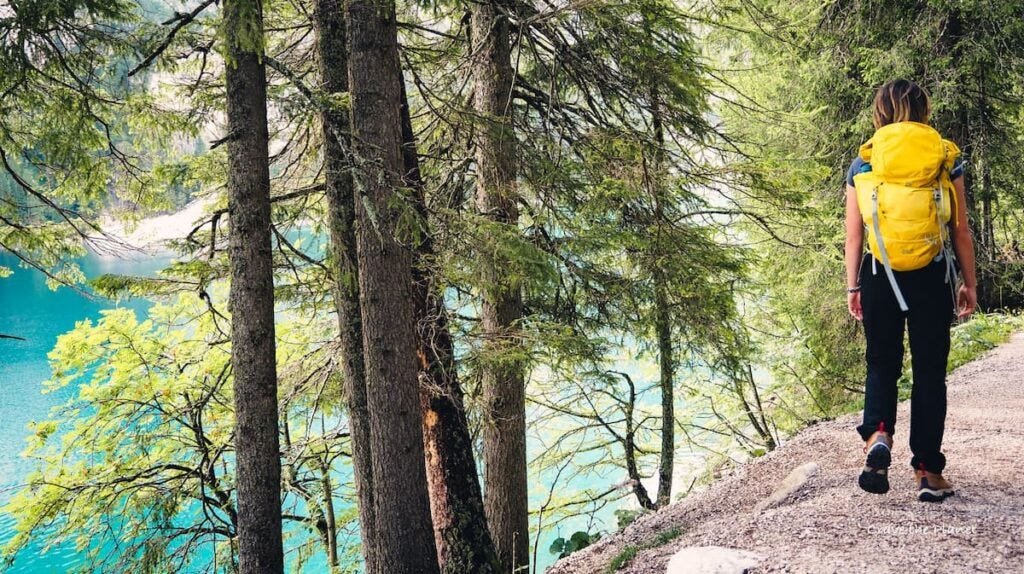The Day My Overconfidence Nearly Got Me Lost | by Camping in Rocky Mountains | Jul, 2025

Standing at the unmarked trail junction with my phone showing “No Service” and thick fog rolling in faster than I’d ever seen, I realized that fifteen years of hiking experience meant absolutely nothing if I hadn’t done my homework. The confidence that had carried me up countless peaks was now working against me, and for the first time in my hiking career, I felt genuinely scared.
This isn’t the story of a beginner who got in over their head. This is the story of how overconfidence nearly turned a routine day hike into a search and rescue operation, and why I now approach every trail — no matter how “easy” — with the respect it deserves.
It was a crisp October morning in Vermont’s Green Mountains, and I was feeling particularly smug about my hiking prowess. I’d just completed a challenging section of the Long Trail the weekend before, and this “moderate” 8-mile loop seemed like a recovery hike. The weather forecast called for partly cloudy skies, the trail was well-marked on my favorite hiking app, and I’d done similar routes in the area dozens of times.
So I did what overconfident hikers do: I skipped my usual pre-hike routine. No detailed map study, no alternate route planning, no weather deep-dive beyond a quick phone check. I grabbed my lightweight day pack, tossed in some snacks and water, and hit the trail by 9 AM with nothing but my phone for navigation.
The first three miles were perfect. The trail was clear, the views spectacular, and I was making excellent time. I even passed several other hikers, offering friendly advice about the route ahead with the casual authority of someone who “knew these mountains.” Looking back, I cringe at my arrogance.
“At mile 4, three things happened simultaneously that turned my comfortable hike into a survival situation: an unmarked trail split that wasn’t on my app, rapidly deteriorating weather, and the dead battery I hadn’t anticipated.”
The trail junction wasn’t marked on any of my digital maps, and both paths looked equally worn. The weather forecast’s “partly cloudy” had evolved into a thick fog bank that reduced visibility to maybe thirty feet. My phone, which I’d been using liberally for photos and music, died just as I tried to get my bearings.
For the first time in years, I felt the cold grip of genuine fear. I was alone, disoriented, and completely dependent on technology that had just failed me. The temperature was dropping, I had no physical map or compass, and I realized I hadn’t told anyone my specific route or expected return time.
I spent what felt like hours (but was probably thirty minutes) standing at that junction, trying to logic my way out of the situation. Should I backtrack? Pick a path and hope? Stay put? Every option seemed equally risky, and for someone who prided himself on mountain decision-making, I was paralyzed by uncertainty.
Eventually, the fog lifted enough for me to spot a familiar ridgeline, and I was able to backtrack to the last known junction. But the four hours it took to complete what should have been a straightforward hike gave me plenty of time to think about everything I’d done wrong.
The most humbling realization: If I had treated this “easy” hike with the same respect I gave challenging peaks, none of this would have happened.
That day fundamentally changed how I approach every hike, regardless of difficulty. I learned that experience can be dangerous when it breeds complacency, and that the mountains don’t care about your resume. They demand respect and preparation every single time.
Now, I treat every hike like it’s my first. I study maps, check multiple weather sources, carry backup navigation, and always tell someone my exact plans. Most importantly, I’ve learned to assess risks not just based on the trail’s rating, but on current conditions, my preparedness level, and a dozen other factors I used to ignore.
The irony is that this more careful approach hasn’t made hiking less enjoyable — it’s made it more so. When you’ve properly assessed and prepared for risks, you can relax and truly enjoy the experience, knowing you’ve done everything possible to stay safe.
- Study physical maps and identify bail-out points
- Check multiple weather sources and have contingency plans
- Carry backup navigation tools (map, compass, backup battery)
- Share detailed plans with someone reliable
- Pack as if conditions might deteriorate
If my story sounds familiar — if you’ve ever cut corners on preparation because a hike seemed “too easy” to worry about — you’re not alone. The difference between a great day on the trails and a potential disaster often comes down to the work you do before you even lace up your boots.
After that humbling day in Vermont, I dove deep into learning proper risk assessment techniques. It’s not just about checking the weather or bringing extra water — it’s about developing a systematic approach to identify, evaluate, and prepare for everything that could go wrong, so you can focus on everything that will go right.
Whether you’re planning your first hike or your thousandth, taking the time to properly understand comprehensive risk assessment for hiking adventures isn’t just about safety — it’s about confidence, enjoyment, and making sure every trail experience is one you’ll want to repeat.
The mountains taught me humility that day, but they also taught me respect. Now every hike starts with proper planning, and every return home feels like a small victory worth celebrating.

